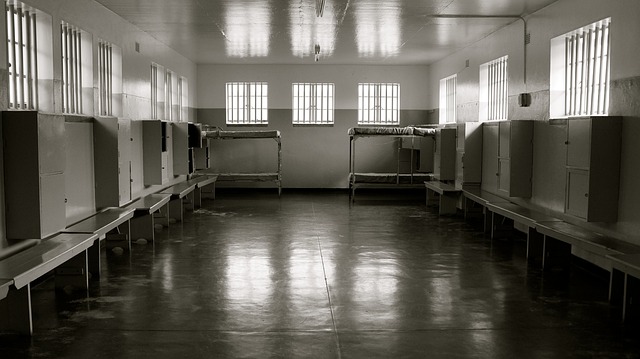Rural-urban disparities in global immigration and DUI (driving under the influence) laws reflect societal and cultural differences, with urban centers enforcing stricter regulations due to higher-risk driving behaviors and rural regions adopting more lenient policies due to lower enforcement presence and unique socio-economic factors. Immigration policies further complicate enforcement, especially across borders, requiring adaptable strategies that consider fair and effective DUI management while accounting for regional peculiarities and global adherence to road safety standards. Understanding these perspectives is crucial for navigating local laws, cultural norms, and international travel, ensuring compliance and safety.
In the global landscape of driving under the influence (DUI) laws, rural and urban regions often operate under distinct regulatory frameworks. This article delves into the intricate world of DUI perspectives, exploring how immigration policies and geographical factors shape enforcement strategies. From understanding global DUI laws to dissecting disparities between rural and urban environments, we uncover unique challenges and considerations that impact prosecution and prevention efforts. By examining these diverse contexts, we gain valuable insights into the complex web of Global Immigration and DUI Perspectives.
- Understanding Global DUI Laws: A Comprehensive Overview
- Rural vs Urban DUI Law Disparities: Key Differences
- Impact of Immigration Policies on DUI Enforcement
- Challenges and Unique Considerations in Rural Areas
- Urban Centers: Complexities in DUI Prosecution and Prevention
Understanding Global DUI Laws: A Comprehensive Overview

In the global landscape of immigration and DUI (Driving Under the Influence) perspectives, laws vary significantly between rural and urban areas, reflecting broader societal and cultural differences. While urban centers often have stringent DUI regulations aimed at curbing high-risk driving behaviors due to dense populations and heavy traffic, rural regions typically face unique challenges. These may include lower enforcement presence, longer response times for emergency services, and a different set of socio-economic factors influencing drinking and driving patterns. Understanding these global immigration and DUI perspectives is crucial in appreciating the complex interplay between local laws, cultural norms, and international travel.
The disparities in rural-urban DUI laws can be attributed to several factors. Urban areas often have more developed legal frameworks due to higher rates of crime and accidents, leading to stricter penalties and enhanced enforcement. Conversely, rural communities may have less stringent regulations but face distinct issues like isolated incidents and underreporting. As international travel becomes increasingly common, it’s essential for both law enforcers and individuals to be aware of these global immigration and DUI perspectives to ensure compliance and safety across borders.
Rural vs Urban DUI Law Disparities: Key Differences

In the realm of Global Immigration and DUI perspectives, rural and urban areas often face stark disparities in drunk driving laws. These differences can be attributed to varying socio-economic conditions, population densities, and enforcement priorities. Urban regions, with their bustling streets and diverse populations, tend to have stricter DUI regulations, reflecting a need for enhanced public safety measures. In contrast, rural areas, characterized by thinner populations and less dense traffic, may have more lenient laws, though this should not be construed as an endorsement of drunk driving.
Key differences manifest in penalties, enforcement tactics, and educational initiatives. Urban jurisdictions often impose harsher fines, longer license suspensions, and mandatory jail sentences to deter high-risk behavior. In rural settings, penalties might be more lenient, with a focus on community-based education and rehabilitation programs. These disparities underscore the importance of tailoring DUI laws to specific regional needs while maintaining global standards for road safety.
Impact of Immigration Policies on DUI Enforcement

Immigration policies play a significant role in shaping global immigration and DUI perspectives, impacting both rural and urban areas differently. In regions with stringent immigration checks, law enforcement agencies often encounter challenges when dealing with non-residents or undocumented individuals accused of driving under the influence (DUI). Strict border control can hinder efforts to track and prosecute DUI offenses, as these individuals may quickly cross borders, making it difficult to establish jurisdiction.
Additionally, cultural and linguistic barriers can complicate DUI enforcement. Non-native residents might not be fully aware of local traffic laws or face communication challenges with law enforcement officers. These factors contribute to a complex global immigration and DUI landscape, requiring adaptable strategies to ensure fair and effective enforcement while considering the unique circumstances of each community.
Challenges and Unique Considerations in Rural Areas

In rural areas, law enforcement faces unique challenges when dealing with DUI (driving under the influence) cases, which often require a different approach compared to urban settings. With lower population densities, officers may have longer response times, making it more difficult to proactively patrol and identify potential DUI drivers. This delays the intervention process, potentially increasing the risk for both officers and the public. Additionally, rural communities often struggle with limited resources and smaller budgets, which can impact the availability of specialized units or advanced testing equipment crucial for accurate DUI enforcement.
The Global Immigration and DUI Perspectives further complicate matters in remote regions. Migrant workers who reside in rural areas may face language barriers and a lack of understanding of local laws, making communication with law enforcement challenging. This gap in knowledge can hinder their ability to seek assistance or comply with legal procedures, especially if they are facing DUI charges. Understanding these nuances is essential for creating effective strategies that balance public safety and the unique needs of rural communities.
Urban Centers: Complexities in DUI Prosecution and Prevention

In urban centers, the complexities of DUI (driving under the influence) prosecution and prevention are multifaceted, influenced by a dynamic blend of demographic and socioeconomic factors. High population densities in cities lead to more frequent traffic stops, increasing the potential for interactions with law enforcement. This, coupled with global immigration patterns, brings cultural variations in alcohol consumption norms and legal interpretations, adding another layer of complexity to DUI enforcement. Urban areas often have diverse populations, with varying acculturation levels and knowledge of local laws, making public education campaigns more challenging but crucial for prevention.
The Global Immigration and DUI Perspectives play a significant role here. Non-native residents might not be aware of the stricter urban DUI laws or face language barriers when communicating with law enforcement during stops. This highlights the importance of tailored, multicultural awareness campaigns to ensure fair and effective enforcement while addressing the unique challenges posed by urban environments.
The disparities between rural and urban DUI laws highlight the multifaceted nature of drunk driving enforcement. As we’ve explored global immigration and DUI perspectives, it’s clear that these differences are influenced by demographic, geographical, and cultural factors. Understanding these variations is crucial for creating effective, equitable, and consistent DUI policies worldwide. By addressing the unique challenges in both rural and urban areas, we can foster safer driving environments while respecting the diverse needs of different communities.






